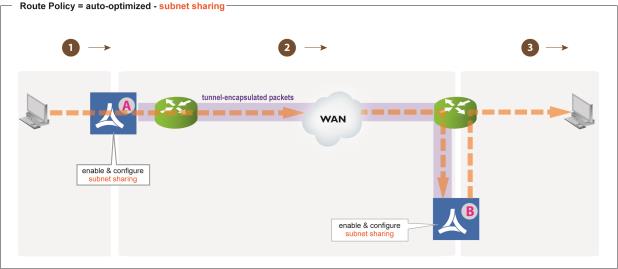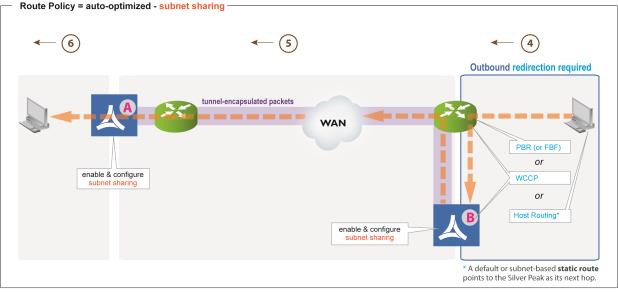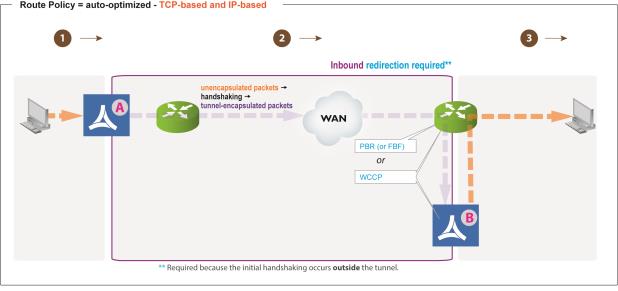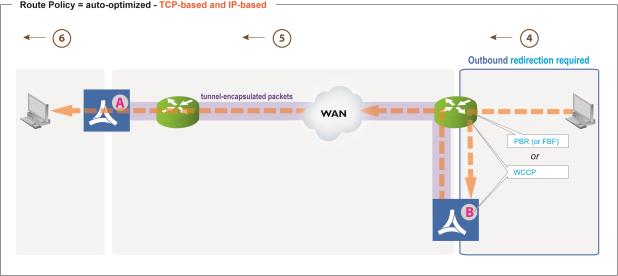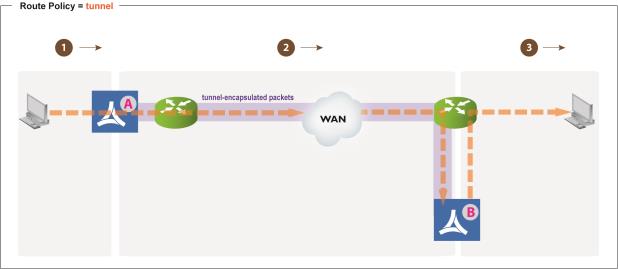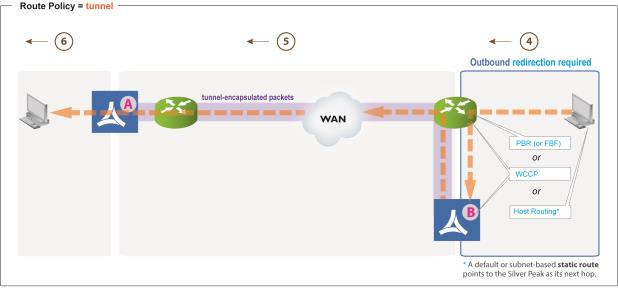To optimize traffic, the appliance must intercept both the inbound and outbound packets for each flow.
There are three methods for redirecting outbound packets from the client to the appliance (known as LAN-side redirection, or outbound redirection):
|
•
|
PBR (Policy-Based Routing) — configured on the router. No other special configuration required on the appliance. This is also known as Filter-Based Forwarding (FBF).
|
If you want to deploy two Silver Peaks at the site, for redundancy, then you also need to use VRRP (Virtual Router Redundancy Protocol).
|
•
|
WCCP (Web Cache Communication Protocol) — configured on both the router and the Silver Peak appliance. You can also use WCCP for redundancy and load balancing.
|
|
•
|
Host routing — the server/end station has a default or subnet-based static route that points to the Silver Peak appliance as its next hop. Host routing is the preferred method when a virtual appliance is using a single interface, mgmt0, for datapath traffic (also known as Server Mode).
|
To ensure end-to-end connectivity in case of appliance failure, consider using VRRP between the appliance and a router, or the appliance and another redundant Silver Peak.
How you plan to optimize traffic affects whether or not you also need inbound redirection from the WAN router (also known as WAN-side redirection):
|
•
|
If you enable subnet sharing (which relies on advertising local subnets between Silver Peak appliances) or route policies (which specify destination IP addresses), then you only need outbound redirection.
|
If you have subnets that are not directly attached to the Silver Peak, you may need to manually add those subnets so the local appliance can advertise them to its peers. If those subnets are not reachable via the default LAN–side next-hop router, then you may also need to add a static route to the local Silver Peak, specifying which next-hop router to use to reach a given subnet. For an example, see “Configuring A1 and A2 to Advertise Non-Local Subnets”.
|
•
|
If, instead, you default to TCP-based or IP-based auto-optimization (which relies on initial handshaking outside a tunnel), then you must set up inbound and outbound redirection on the WAN router.
|
|
•
|
Additionally, for TCP flows to be optimized, both directions must travel through the same client and server appliances. If the TCP flows are asymmetric —as could occur in a high-availability deployment — you need to configure clusters for flow redirection among local appliances.
|
|
•
|
when subnet sharing is enabled
|
|
•
|
|
•
|
when directed to a specific tunnel by the Route Policy
|
|
n
|
Enable subnet sharing on both the local and remote appliances.
|
|
n
|
For outbound redirection to the out-of-path appliance (B), choose from PBR (or FBF), WCCP, or host routing.
|
|
n
|
|
n
|
For inbound and outbound redirection to the out-of-path appliance (B), choose from PBR (or FBF) or WCCP.
|
|
n
|
For outbound redirection to the out-of-path appliance (B), choose from PBR (or FBF), WCCP, or host routing.
|
|
n
|
